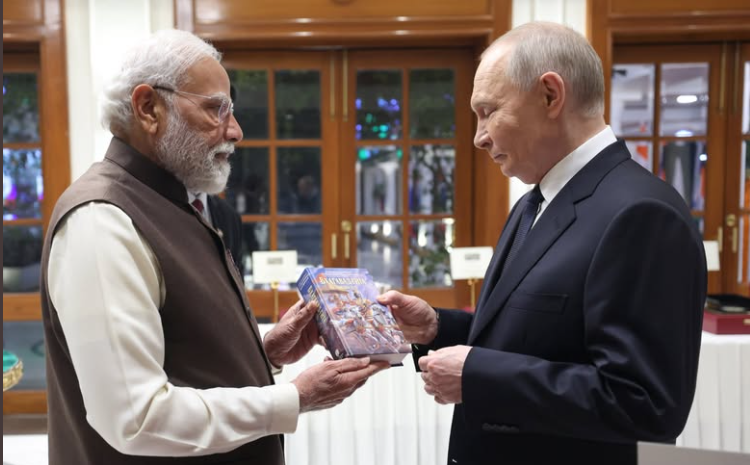Passage Through India
- InduQin
- Mar 12, 2024
- 4 min read
Today, the global tourism market is valued in excess of $5 trillion, of which India’s share is less than 2%. India must aim to create 25 million new jobs through tourism in the next five years. States have a key role in making this a reality.
Today, the global tourism market is valued in excess of $5 trillion, of which India’s share is less than 2%. India must aim to create 25 million new jobs through tourism in the next five years. States have a key role in making this a reality.
Ease of doing tourism Cleanliness of cities and tourist destinations must be accorded the highest priority. More ambitious air quality action plans must be drawn up.
States must focus on improving connectivity from airports and stations to tourist destinations and circuits. High-speed digital connectivity at these destinations must also be ensured. Development of tourism infrastructure around significant cultural and heritage circuits and destinations, in partnership with the private sector, is crucial. This includes enhancing connectivity to key Buddhist sites like Kushinagar in UP and Bodh Gaya in Bihar to attract East Asian tourists, ensuring that these destinations are accessible year-round.
Development of world-class museums and creating unique experiences through PPPs can also serve as cultural beacons.
Of MICE and men India’s G20 presidency has positioned the country as a global focal point for the MICE — meetings, incentives, conferences, exhibitions — industry. Hosting over 220 meetings across 60 cities with 1 lakh-plus participants showcased India’s capability to manage large-scale international events. Creation of top-class venues such as the Bharat Mandapam and Yashobhoomi in Delhi have caught the world’s attention.
With the global MICE tourism market valued at $500 billion, India’s share is less than 1%, a figure that underscores immense growth potential. India must now aim to host every global convention and exhibition here. Developing convention and visitors’ bureaus, enhancing international exhibit spaces and improving overall destination management can serve as critical steps towards realising India’s immense potential in the MICE market.
Making air waves India is the third-largest civil aviation market. There is immense potential for our airports to become transit hubs connecting North America and Europe to Southeast Asia, East Africa and Northeast Asia. This would have huge economic benefits. Schemes such as UDAAN have considerably improved domestic air connectivity. Now is the time to boost international connectivity to key destinations.
Re-evaluating air-connectivity bilateral agreements, and boosting availability of seats with direct flights to tier-2 and -3 cities is critical. Indian airports must also be positioned as global hubs with direct connectivity to all major global destinations. At present, a vast segment of Indians travels long haul via third-country airports. India must transform its airports into global aviation hubs facilitating seamless connectivity between domestic and international airports.
Club med destination India’s potential in health and wellness tourism is vast, and largely untapped. With Ayurveda, yoga and other traditional practices, India offers a unique proposition in the global wellness tourism sector. Its rich heritage in natural and holistic healing, combined with GoI’s push towards promoting Ayurveda and wellness beyond mere treatment, positions India as a compelling destination for those seeking physical, mental and spiritual rejuvenation. Introduction of AYUSH visas is a testament to GoI’s commitment to making India the epicentre of global wellness tourism.
On the campaign trail Launch of a vigorous, global Incredible India 2.0 campaign digitally can prove to be pivotal in marketing Indian destinations. An element in this strategy could be targeting NRIs and PIOs, harnessing emotional and cultural ties of this demographic, encouraging them to explore their heritage.
To enhance tourism and facilitate increased international footfall, India could significantly benefit from adopting innovative visa policies, such as offering visa on arrival and visa-free travel from target countries. These measures will simplify the process for tourists to visit India, making the country more accessible, and attractive, as a destination
Industrial tourism Giving industry status to the tourism sector would make it more commercially viable, leading to the sector getting benefits of power tariff and other taxes at industrial rates against the present requirement of paying at much higher commercial rates. It will also enable hospitality projects to get lending at much lower interest rates. This initiative needs to be undertaken by both central and state governments.
Green cover According to a Booking.com sustainability study, 87% of travellers globally want to travel sustainably, and 68% of customers look for eco-friendly hotels. Hospitality sector must lead the green movement by making itself efficient in terms of energy, water waste, temperature adjustments and LED lighting. Sustainability must become the driving force, as it will be the key to enhancing value and attracting high-value customers.
The tourism sector in India is ready to pivot, with the potential to not only significantly enhance its contribution to the national GDP but also to become a major source of employment and economic empowerment across the country. Such a strategic approach can not only elevate India’s position on the global tourism map but also unlock the goal of creating 25 million jobs in the next five years.
By Amitabh Kant








Comments